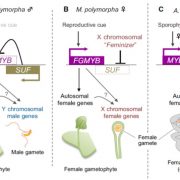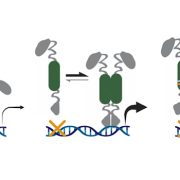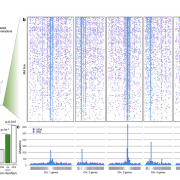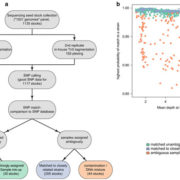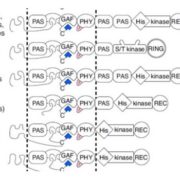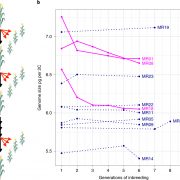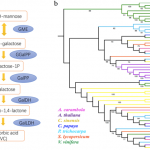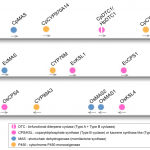Repurposed genes and the evolution of plant carnivory (Curr. Biol.)
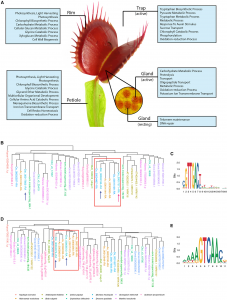 Carnivorous plants attract, trap, digest, and import nutrients from small animal prey, enabling these plants to thrive in nutrient-poor soil. Palfalvi et al. sequenced, annotated, and compared draft genomes from the family Droseraceae for the Venus flytrap (Dionaea muscipula), the waterwheel plant (Aldrovanda vesiculosa), and the sundew (Drosera spatulata). They identified an early whole-genome duplication that occurred at the base of the Droseraceae family that contributed to genetic diversification into novel functions for prey attraction, perception, digestion, and nutrient absorption. Genes were recruited for new carnivory-specific functions, such as from root nutrient transporters to leaf-derived trap nutrient absorption. Transcriptome analysis of ten tissues, including active and inactive traps, identified that nutrient transporters in the traps are only turned on after trap activation and that their promoters are associated with specific WRKY transcription factors that have been repurposed. These novel genomes show that the changing selective pressures during evolution of carnivory are associated with massive gene loss resulting in three of the gene-poorest plant genomes sequenced so far despite their physiological novelties. (Summary by Katy Dunning @plantmomkaty) (Curr. Biol.) 10.1016/j.cub.2020.04.051
Carnivorous plants attract, trap, digest, and import nutrients from small animal prey, enabling these plants to thrive in nutrient-poor soil. Palfalvi et al. sequenced, annotated, and compared draft genomes from the family Droseraceae for the Venus flytrap (Dionaea muscipula), the waterwheel plant (Aldrovanda vesiculosa), and the sundew (Drosera spatulata). They identified an early whole-genome duplication that occurred at the base of the Droseraceae family that contributed to genetic diversification into novel functions for prey attraction, perception, digestion, and nutrient absorption. Genes were recruited for new carnivory-specific functions, such as from root nutrient transporters to leaf-derived trap nutrient absorption. Transcriptome analysis of ten tissues, including active and inactive traps, identified that nutrient transporters in the traps are only turned on after trap activation and that their promoters are associated with specific WRKY transcription factors that have been repurposed. These novel genomes show that the changing selective pressures during evolution of carnivory are associated with massive gene loss resulting in three of the gene-poorest plant genomes sequenced so far despite their physiological novelties. (Summary by Katy Dunning @plantmomkaty) (Curr. Biol.) 10.1016/j.cub.2020.04.051


